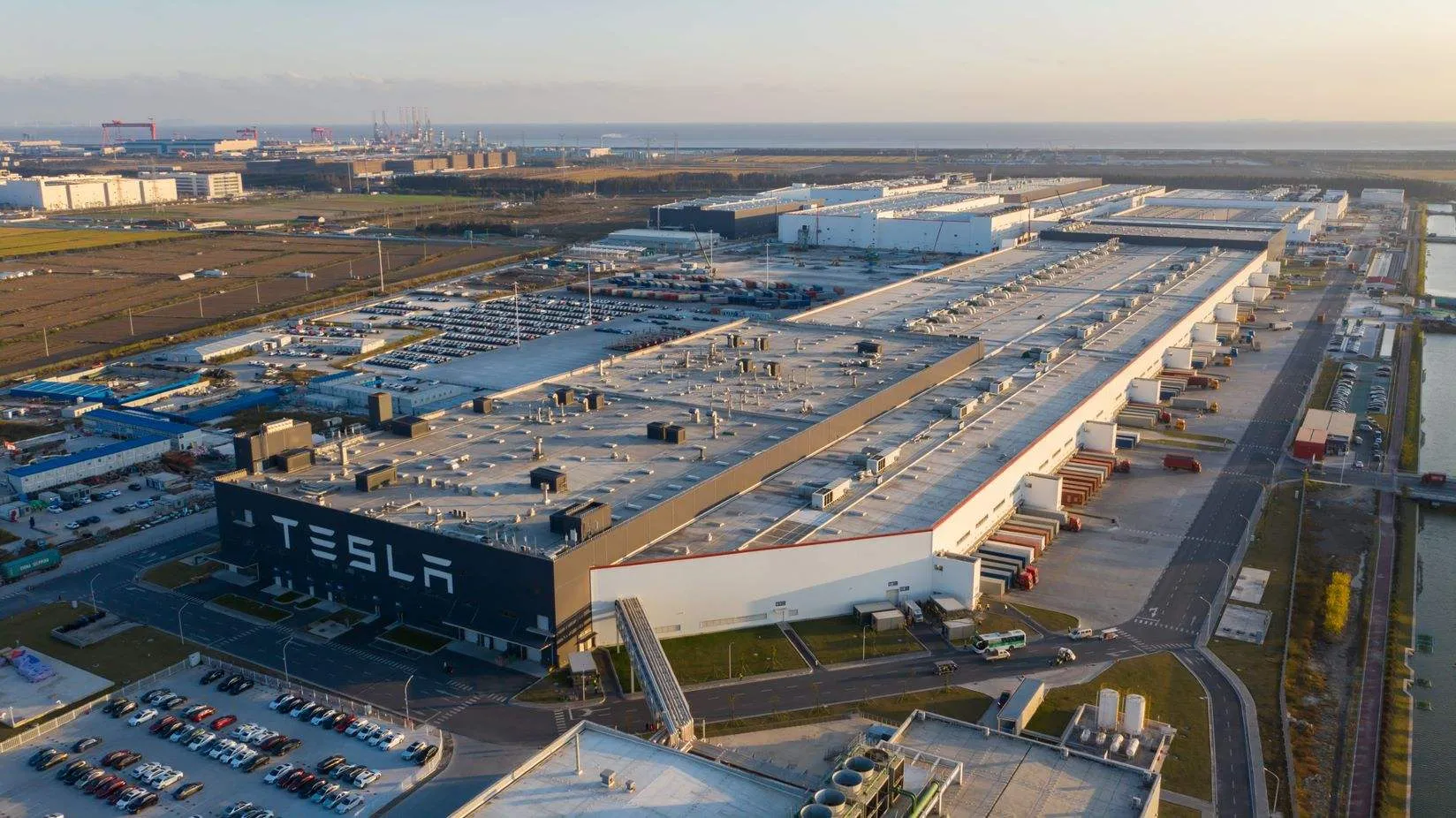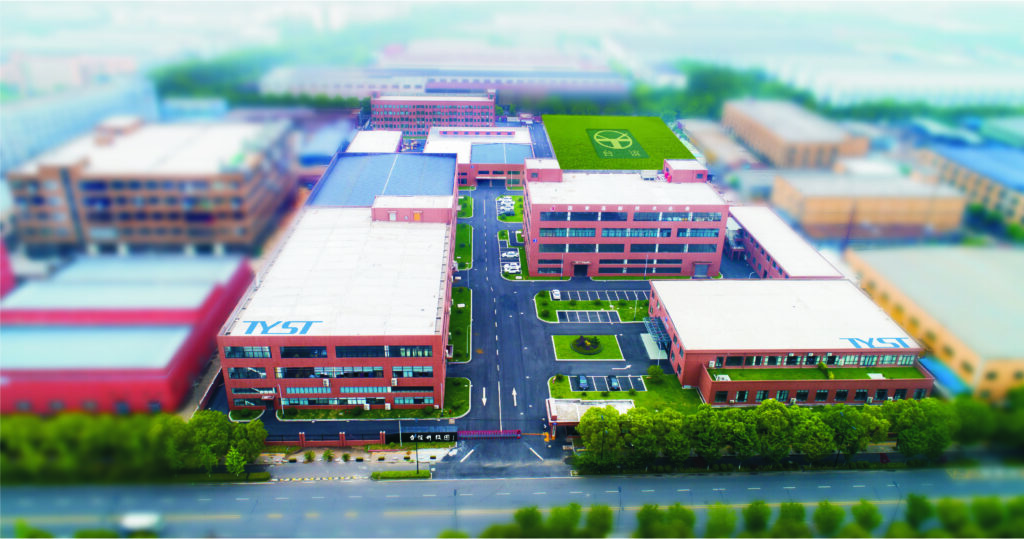
Fire alarms are crucial for safety and protecting buildings, especially when it comes to Alarm Systems and Fire Safety Monitoring. Whether at home or work, having the right system in place is essential during emergencies. Home and business alarm systems share the same goal of safety but are designed differently. Understanding these differences will assist you in selecting the right one. Fire alarms and safety checks not only keep you calm but also enable you to act quickly in the face of danger.
Key Takeaways
- Learn the main differences between home and business fire alarms. Home systems are easier and made for houses. Business systems are more advanced and for bigger places.
- Testing and taking care of fire alarms is very important. At home, check alarms every month. For businesses, follow local rules and get them checked by experts yearly.
- Pick a fire alarm system that matches your needs. Think about how big your place is and how many people are there to choose the right system.
- Good monitoring services are key for fire alarms to work well. They help with fast action in emergencies, keeping homes safe and businesses secure.
- Add new features like smart technology to your fire alarm. These updates make it safer and easier to watch and control.
How Monitored Fire Alarm Systems Work
The Key Parts
Fire alarm systems use important parts to detect dangers. Each part helps keep people safe. Here are the main parts you should know:
- Sensors: These find specific dangers, such as:
- Smoke detectors that sense smoke from fires.
- Heat sensors that notice rising temperatures.
- Gas leak detectors for propane or natural gas leaks.
- Water leak detectors to stop flooding early.
- Transmission Channels: These link sensors to the control panel. They can use wires or work wirelessly.
- Alarm Control Panel: This is the system’s brain. It reads sensor signals and sets off alarms when needed.
- User Interface: This lets you check and control the system. You can use apps or websites for this.
- Integrated Multi-Sensor Technology: Newer systems combine sensors for better accuracy.
- Smart Communication Modules: These send alerts quickly and connect with monitoring centers.
Fire alarm systems must follow strict rules, like the NFPA 72 code. This code explains how to design, install, and maintain systems. Commercial systems often need permits before being set up to meet local laws.
How Does Fire Alarm Monitoring Work?
Fire alarm monitoring keeps your system connected to a monitoring center. When a sensor finds smoke, heat, or gas, it sets off an alarm. The system sends this signal to the monitoring center, where experts check the situation.
Quick response times are very important. Faster actions can save lives and protect property. Many systems aim to alert emergency services in 90 seconds or less. Some systems respond in just 15-30 seconds. Smart technology helps make this process faster.
By using multiple sensors and fast communication tools, monitored fire alarm systems offer strong protection for homes and businesses.
Key Differences Between Residential and Commercial Fire Alarm Systems

Coverage
Fire alarm systems are designed differently for homes and commercial buildings, based on the size, complexity, and usage of the space.
Residential fire alarm systems are typically used in smaller environments such as houses or apartments. These systems often include a few smoke detectors and, in some cases, sprinklers. Their primary role is to protect the occupants of a single living space, focusing on basic detection and quick alerts to keep residents safe.
In contrast, commercial fire alarm systems are built for larger, more complex structures like office buildings, shopping centers, schools, and hospitals. These spaces have multiple rooms, floors, and specialized areas such as kitchens, lobbies, and equipment rooms, which require broader and more sophisticated coverage. Commercial systems feature a higher number of detectors, alarms, and sensors to ensure fast and reliable detection throughout the entire building.
Additionally, commercial fire alarms are often integrated with other systems—like HVAC, elevators, and emergency lighting—to enable coordinated responses during emergencies. This integration helps manage evacuation routes, isolate hazards, and provide real-time updates, making them essential for protecting both property and large numbers of people.
Complexity
Residential fire alarms are simple and easy to use. They focus on basic safety, like finding smoke or heat. They don’t need to connect with other systems and are simple to set up. In most cases, these systems are self-contained and do not require external monitoring.
Commercial fire alarms are much more advanced. They are made for larger spaces and different needs. Here’s what makes them complex:
- They have more alarms and detectors for full coverage.
- They connect with HVAC and elevators for emergency plans.
- They follow strict rules like NFPA 72 to stay reliable.
- They use loud sounds and flashing lights to alert everyone, even those who can’t hear.
This complexity helps them protect big buildings with many people inside.
Regulatory Requirements and Compliance
Fire alarms must follow rules to keep people safe and meet laws. Residential systems follow NFPA 13D rules for small homes. These rules are less strict than those for businesses. For example, sprinklers are not always required in homes.
Commercial systems have tougher rules to follow. They must meet NFPA 13 and NFPA 72 standards. These rules explain how to install, test, and maintain the systems. Following these rules is necessary for safety, insurance, and avoiding fines. Most business systems also need regular checks and 24/7 monitoring.
| Regulatory Standard | What It Covers |
|---|---|
| NFPA 72 | Explains how to test and maintain fire alarm systems. |
| NFPA 13 | Lists rules for sprinklers in business buildings. |
| Insurance Obligations | Requires regular tests to keep insurance valid. |
Note: Following these rules keeps people safe and avoids legal trouble.
Alarm Notification System
Fire alarms warn people during emergencies to help them act fast. Residential alarms use simple tools like loud sounds or flashing lights. These alarms wake you up or get your attention, especially at night.
Commercial alarms are more advanced and work for bigger spaces. They use smart tools to alert large groups of people. For example:
- Voice Communication Systems: These give clear directions to help people stay safe.
- Computer Networking: This links alarms to central systems for quicker alerts.
- Additional Notification Systems: These include strobes, sirens, and text messages to reach everyone.
Commercial alarms focus on helping everyone, including those with hearing or vision challenges. They use sounds and lights to make sure all people can act during emergencies.
Power Backup Systems
Backup power keeps alarms working when electricity goes out. Without it, alarms might stop during emergencies. Residential alarms use basic batteries that last for a short time.
Commercial alarms have better backup systems to stay on longer. These systems include:
- Lithium-Ion Batteries: These batteries last longer and store more energy.
- Intelligent Battery Management: This checks battery health and keeps them ready to work.
- Fast-Charging Capabilities: These recharge batteries quickly for future use.
| Specification | What It Does |
|---|---|
| Power Supply Voltage Range | Works with AC and DC power for different needs. |
| Voltage Regulation Mechanisms | Keeps power steady to avoid damage. |
| Protection Features | Stops problems like overcurrent or short circuits. |
| Battery Technology | Uses lithium-ion batteries for long-lasting power. |
| Intelligent Battery Management | Watches battery levels to keep them working well. |
| Fast-Charging Capabilities | Quickly recharges batteries after power comes back. |
Systems like the EST4 keep alarms running during outages. They stop data loss and protect equipment. These features are very important for businesses.
Integration with Other Systems and Technologies
Modern fire alarms work with other devices to improve safety. Residential alarms connect to smart home tools. You can check alarms using apps or websites, making them easy to control.
Commercial alarms connect to many systems for better protection. Examples include:
- Voice Communication Systems: These give clear instructions during emergencies.
- Computer Networking: This links alarms to monitoring centers for faster alerts.
- Additional Notification Systems: These send warnings through texts, emails, or apps.
Commercial alarms also work with building systems like HVAC and elevators. During emergencies, alarms can turn off HVAC to stop smoke or control elevators for safety. This teamwork helps protect people and property.
Overview of Fire Alarm Monitoring Types
Fire alarm monitoring plays a key role in making sure fire protection systems work as expected. It represents a mid-level connection in the chain of essential safety support. There are several types of monitoring, each designed to meet specific needs and compliance requirements.
These systems help ensure that emergencies are detected and handled quickly by sending alerts to the right people or services. Here’s a brief overview of the most common monitoring methods.
Central Station Monitoring
Central station monitoring links your fire alarm to a professional center. When an alarm goes off, a signal is sent to the center. Trained staff check the situation and contact emergency services. This system is popular for homes and businesses because it is dependable.
Key parts of central station monitoring include:
- People: Experts make sure the system works well.
- Automation: Software handles alarms using pre-set instructions.
- Redundant Technology: Backup tools keep the system running during emergencies.
| Element | What It Does |
|---|---|
| People | Operators and experts ensure the system works properly. |
| Automation | Software processes alarms and follows set instructions. |
| Redundant Technology | Backup systems like networks and databases keep things running smoothly. |
Modern technology has improved how fire alarms send signals. For example, hospitals use these systems to get fast help during emergencies.
Proprietary Monitoring
Proprietary monitoring works well for big places like colleges or airports. In this setup, the organization runs its own monitoring center with trained staff. This gives them more control and flexibility, which is helpful for complex buildings.
A key feature of proprietary systems is their ability to work with other safety tools. For example, addressable fire alarms show exactly where a problem is. This helps responders act faster. These systems also connect with other safety tools like cameras and access controls.
Supervised Remote Station Monitoring
Supervised remote station monitoring mixes on-site and off-site systems. Fire alarm signals go to a remote center that is closely watched. Professionals at the center handle alarms and contact emergency responders quickly.
| Type of Monitoring | What It Does |
|---|---|
| On-Premise Monitoring | Used by large places like airports or universities with their own monitoring stations. |
| Off-Premise Monitoring | Central or remote stations monitor alarms from different locations. |
This type of monitoring is great for businesses that need reliable service but don’t want to manage their own system. It’s efficient and cost-effective, making it a popular choice.
Tip: Think about your property size, alarm system complexity, and safety needs when picking a monitoring system.
IoT-Enabled Fire Alarm Monitoring
IoT-enabled fire alarm systems offer a smarter, more efficient approach to fire safety. By integrating connected devices and real-time data exchange, these systems allow for faster detection, quicker response, and seamless coordination during emergencies. They also reduce both upfront and ongoing costs, making them a practical solution for modern buildings. Whether for offices, factories, or public spaces, Tyee’s IoT solutions are designed to adapt, scale, and integrate seamlessly with other building systems.
| Key IoT Advantage | What It Does |
|---|---|
| Smart installation | IoT-based wireless or hybrid systems simplify setup, reduce wiring needs, and make deployment faster and more flexible. |
| Remote monitoring | IoT platform enables real-time monitoring from anywhere, allowing early fault detection and reducing the need for on-site checks. |
| Intelligent alerts | Sends instant, data-rich notifications to mobile devices and control centers, improving emergency awareness and response speed. |
| System integration | Easily connects with HVAC, lighting, and security systems to support a unified smart building management strategy. |
| Data-driven maintenance | Collects and analyzes device performance data to enable predictive maintenance and reduce unexpected downtime. |
Tyee’s IoT fire alarm solutions are more than just alarms—they are intelligent systems built for proactive safety, smarter buildings, and long-term cost efficiency.
Municipal Fire Alarm Monitoring
Municipal fire alarms protect public spaces by linking alarms to central stations. These systems follow strict rules and act fast during emergencies.
Important rules include:
- Manual alarms must connect to a certified central station.
- Water-flow alarms must link to loud alarms and staffed fire departments.
- Sprinkler valve tamper alarms must connect to staffed stations for quick action.
Municipal systems focus on safety and following rules. They work with water-flow alarms and tamper detectors for full protection. These systems are key for schools, public buildings, and large spaces.
TYEE’s fire alarms meet municipal rules and perform reliably. They are designed for growing markets, offering safety and peace of mind.
Why Fire Alarm Systems: What Works and What Doesn’t
Advantages of Residential Fire Alarm Systems
Residential fire alarms help keep homes safe from fires. They detect fires early, giving families time to leave safely. These systems are simple to set up and easy to take care of.
Here are some benefits:
- They stop about 80% of electrical fires, showing their usefulness.
- They rarely cause false alarms, making them reliable and trusted.
- Smart systems improve by learning from past fire events.
Residential fire alarms give homeowners peace of mind. They are an important part of keeping families and homes safe from danger.
Advantages of Commercial Fire Alarm Systems
Commercial fire alarms are made for big spaces like offices or malls. They cover large areas and protect workers, customers, and property. These systems work with other tools, like HVAC and elevators, to handle emergencies better.
Some key benefits include:
- They use voice alerts and flashing lights to warn everyone, including people with disabilities.
- They follow strict safety rules, helping businesses avoid legal problems.
- They have strong backup power to keep working during outages.
Commercial fire alarms are important for safety in workplaces and public areas. Their advanced features make them dependable for saving lives and protecting buildings.
Challenges and Limitations of Residential Fire Alarm Systems
Residential fire alarms work well but have some problems. Studies show 96% of U.S. homes have alarms, but 20% don’t work. Regular checks are needed to keep them working properly.
Bad installation can also make alarms less effective. For example, alarms placed too far from kitchens might not warn about kitchen fires. Research shows alarm placement and type affect how well they work in real fires.
To fix these issues, alarms need proper setup, testing, and care. Doing this will make your home safer and your alarm system more effective.
Challenges and Limits of Commercial Fire Alarm Systems
Commercial fire alarms protect big spaces but have some problems. Knowing these issues helps you fix risks and stay safe.
Common Technical Problems
Many technical issues can make commercial fire alarms less reliable:
- Battery Failures: Old or poorly cared-for batteries may stop working. This leaves alarms useless during power outages.
- System Malfunctions: Bad wiring or broken sensors can cause alarms to fail. This makes it harder to detect fires correctly.
- Aging Equipment: Older alarms might not work well. Replacing them on time keeps them effective.
- Environmental Factors: Dust, heat, cold, or humidity can harm sensors. This may cause false alarms or missed warnings.
- Improper Placement: Alarms in bad spots might not detect fires early. This delays emergency actions.
Regulatory Problems
Fire alarms must follow strict rules, but some are not enforced. NFPA 72 requires alarms to be loud enough for people to hear. However, clear voice instructions are only suggested, not required. This can make voice alerts less helpful in emergencies.
Performance Issues in Big Areas
Large spaces can make alarms work unevenly. Dust in warehouses or temperature changes in factories can hurt sensors. Also, linking alarms with HVAC or elevators adds complexity. This increases the chance of problems during emergencies.
Tip: Regular checks and care can solve these problems. Clean sensors, test backup power, and replace old parts to keep alarms working well.
By understanding these limits, you can make your commercial fire alarm system safer and more reliable.
Applications of Alarm Systems

Commercial Facilities
Fire alarm systems play a vital role in safeguarding commercial environments such as shopping malls, supermarkets, office towers, and hotels. In addition to basic fire and intrusion detection, these systems are often equipped with specialized features tailored to the needs of each location—for example, emergency buttons at cash registers, tamper alerts in high-value merchandise zones, and vehicle theft alarms in parking facilities.
Because commercial spaces are large and often crowded, fire alarm systems must be more advanced and reliable. They are typically integrated with other security technologies such as video surveillance, access control, and patrol management systems. This kind of integration allows for automated responses and centralized control, helping building managers respond to emergencies quickly while improving overall safety operations.
Laws require fire alarms in most business buildings. For example, in the U.S., businesses lead in using fire alarms due to strict safety rules. A study shows that in 2022, over 44% of fire alarm revenue came from commercial use. This shows how important fire safety is for businesses.
| Report Title | Key Findings |
|---|---|
| Fire Alarm And Detection Market Size & Share Report, 2030 | Commercial use made up 44% of revenue in 2022. |
| Fire Protection System Market Size, Share and Growth Analysis | Businesses focus more on fire safety equipment for protection. |
These reports highlight why fire alarms matter in businesses. Installing good systems helps follow rules and keeps people safe.
Residential Communities
In homes, fire alarms are essential for protecting both people and property. They detect fires early, giving families valuable time to respond and evacuate safely. This is especially important in apartments and residential communities, where a single incident can affect multiple households.
Modern home safety systems go beyond just smoke detector. They often include Sounder Beacon, Heat Detector, and carbon monoxide detectors, infrared motion sensors, gas leak alarms, and emergency buttons. These devices work together to form a comprehensive home security network. For example, if an intruder enters the house, the system can immediately trigger an alert, and the homeowner receives a notification through a smartphone app. If smoke or gas is detected, the alarm sounds to warn occupants and, in some cases, automatically notifies emergency services.
With smart integration and mobile access, today’s home fire alarm systems offer more than just protection—they provide peace of mind. Families can monitor safety in real time and react quickly to any danger, no matter where they are.
Industrial Sector
Factories and warehouses have special fire risks like machines, chemicals, and big operations. Fire alarms in these places must handle these dangers. They use special sensors to find heat, smoke, or gas leaks.
Industrial alarms also work with other safety tools. For example, they connect to sprinklers or emergency shut-off systems. This helps respond quickly during emergencies. Using advanced alarms lowers risks and protects workers and equipment in industrial areas.
Public Safety
Fire alarms are important for keeping public spaces safe. They help protect people in places like parks, libraries, and government buildings. These alarms find fires early to stop injuries and damage.
Why Fire Alarms Are Needed in Public Areas
Public places often have many people. Fires here can spread fast and cause fear. Fire alarms lower risks by warning people early. They help with evacuations and guide firefighters to the fire.
Tip: Put fire alarms in busy areas. This makes sure everyone gets alerts during emergencies.
Features That Improve Public Safety
Modern fire alarms have smart features to keep people safe:
- Voice Alerts: These give clear directions for calm evacuations.
- Visual Signals: Flashing lights help those who can’t hear alarms.
- Integration: Alarms work with sprinklers and emergency lights for quick action.
| Feature | How It Helps |
|---|---|
| Voice Alerts | Gives clear instructions for safe evacuations. |
| Visual Signals | Helps people with hearing difficulties stay aware. |
| System Integration | Works with other tools for faster emergency responses. |
Examples of Public Safety Uses
Fire alarms are needed in schools, hospitals, and airports. In schools, they protect students and teachers. In hospitals, they help patients who need extra care. Airports use alarms to manage large crowds during emergencies.
Adding fire alarms to public spaces makes them safer for everyone.
Choosing the Right Fire Alarm System
Assessing Your Specific Needs
Picking the right fire alarm system starts with knowing your needs. Every building is different, so the system depends on its size, number of people, and fire risks. For example, small homes may only need smoke detectors. Big buildings might need advanced systems with extra features.
Start by checking areas that need alarms. Walk through your property and find risky spots like kitchens or storage rooms. Think about the building’s layout. Open spaces may need fewer alarms, but places with many rooms or floors need more coverage.
Also, consider who will use the system. Home systems should be simple and easy to use. Business systems may need voice alerts and flashing lights for larger groups.
Tip: Ask a fire safety expert to check your property. They can suggest the best system for your needs and local rules.
Comparing Costs and Maintenance Requirements
Cost matters when choosing a fire alarm system, but don’t forget maintenance. Cheaper systems may need more repairs, costing more over time. High-quality systems cost more upfront but last longer and save money later.
Compare total costs, including setup, equipment, and monitoring. Home systems are usually cheaper because they’re smaller and simpler. Business systems cost more because they’re bigger and have extra features.
Maintenance is important too. Alarms need regular checks to work well. Home systems need basic care, like changing batteries. Business systems need more checks and professional help to meet safety rules.
| Type of System | Initial Cost | Maintenance Cost | Complexity |
|---|---|---|---|
| Residential System | Lower | Minimal | Simple |
| Commercial System | Higher | Moderate to High | Complex |
Note: A reliable system with easy maintenance saves money and keeps you safe.
Importance of Reliable Monitoring Services
Monitoring services are key for fire alarm systems. They connect alarms to centers where experts act fast during emergencies. Without monitoring, alarms might be missed, delaying help.
For homes, monitoring gives peace of mind. If a fire happens while you’re away, the center alerts firefighters. For businesses, monitoring is even more important. Big buildings need quick responses to protect people and property.
Modern monitoring includes features like alerts sent to your phone. These tools make alarms better and faster during emergencies.
Callout: Pick a monitoring service with good reviews. Look for 24/7 support and fast response times.
By understanding your needs, comparing costs, and choosing reliable monitoring, you can find the best fire alarm system for your property.
Evaluating System Features and Modern Technologies
Today’s fire alarm systems are much more advanced. They include new features that improve safety and work better. When picking a system, focus on its parts, how it works, and if it connects with other tools. Knowing these details helps you choose the right system for your needs.
Key Components of Modern Fire Alarm Systems
Fire alarm systems have many important parts. Each part helps keep people safe. Here’s a simple list of the main features:
| Component/Feature | What It Does |
|---|---|
| Central Fire Alarm Control Panel (FACP) | The main part that gets signals and sets off alarms. |
| Detectors | Find smoke, heat, or gas and send signals to the panel. |
| Manual Call Points | Let people set off the alarm by hand. |
| Notification Appliances | Warn people with sounds or lights when danger is found. |
| Enhanced Performance and Reliability | New systems work better and have fewer false alarms. |
| Compliance with Evolving Safety Standards | Keeps up with the latest fire safety rules. |
| Integration with Other Building Systems | Connects with tools like cameras, lights, and HVAC for better safety. |
| Multi-Criteria Detectors | Use different sensors to find fires more accurately. |
| Video Smoke Detection | Cameras spot smoke quickly in big spaces. |
| Self-Diagnostics | Checks itself and tells you when it needs fixing. |
| Predictive Fire Risk Analysis | Uses data to find risks and stop fires before they start. |
| Wireless and IoT Integration | Uses smart technology to make the system easier to use. |
These features make fire alarm systems safer and more useful in different places.
Conventional vs. Addressable Systems
There are two main types of fire alarm systems: Conventional and Addressable. Conventional systems split buildings into zones, helping you find the general area of a fire. Addressable systems are more exact. They show the exact spot where the alarm went off. This helps emergency teams act faster, especially in large buildings.
Advanced Technologies in Fire Alarm Systems
Modern fire alarms use smart technology to work better. Here are some cool new features:
- Wireless Systems: No need for lots of wires. These are easier to set up and find fires more accurately.
- AI-Driven Alerts: Smart systems know the difference between real fires and false alarms.
- Integration with Building Management Systems: They work with HVAC and lights to stop smoke from spreading.
- Video Smoke Detection: Cameras watch for smoke in real-time, great for big spaces like warehouses.
- Predictive Fire Risk Analysis: Uses data to find fire risks and suggest ways to stay safe.
Tip: Pick systems with self-checking and risk analysis. These features keep your system working and help stop problems early.
Why Modern Features Matter
Upgrading to a new fire alarm system keeps you safe and follows the latest rules. Features like smart detectors and IoT tools make alarms more accurate and easy to use. For example, IoT systems let you check alarms from your phone, even when you’re not home.
By looking at these features, you can pick a system that’s safe, reliable, and easy to use. Whether it’s for your home or business, modern fire alarms help you handle emergencies better.
Knowing how residential and commercial fire alarm systems differ is important. Residential systems are simple and focus on keeping families safe. Commercial systems are more advanced, protecting big spaces and following strict rules. Picking the right system keeps people safe and meets safety laws.
Tip: Smart systems, like TYEE’s IoT-enabled alarms, act quickly and work well with new technology.
Talk to fire safety experts to understand your needs. TYEE’s modern fire alarms offer smart solutions for growing businesses and homes.
FAQ
What is the main difference between residential and commercial fire alarm systems?
Residential fire alarms are simpler and made for homes. They focus on basic safety needs. Commercial fire alarms are more advanced. They cover bigger spaces, connect with other systems, and follow stricter safety rules.
How often should you test your fire alarm system?
Test home fire alarms every month to make sure they work. For business systems, follow local rules. Most businesses need professional checks at least once a year to stay safe and meet laws.
Can you install a fire alarm system yourself?
You can set up simple home fire alarms by following instructions. But business fire alarms need experts to install them. This ensures they meet safety codes and work with other systems properly.
What happens if your fire alarm system fails during a power outage?
Home fire alarms use backup batteries that need regular replacement. Business fire alarms have better backups like lithium-ion batteries. These systems keep alarms working during power outages.
Why is fire alarm monitoring important?
Monitoring links your fire alarm to a professional center. This allows quick help during emergencies, even if you’re not there. It gives homeowners peace of mind and helps businesses protect people and property.









